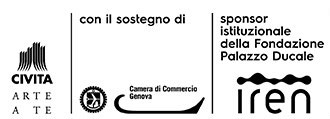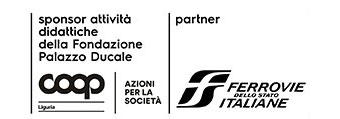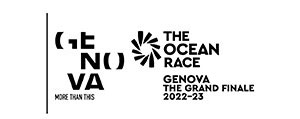This website uses cookies so that we can provide you with the best user experience possible. Cookie information is stored in your browser and performs functions such as recognising you when you return to our website and helping our team to understand which sections of the website you find most interesting and useful.
Fondazione Palazzo Ducale Genova
11 March – 9 July 2023
Doge’s Apartment
The exhibition entitled “Man Ray. Opere 1912 – 1975” pays tribute to the work of the great master Emmanuel Radnitzky, aka Man Ray, who was born in Philadelphia in 1890 and died in Paris in 1976. He has gone down in history as one of the greatest photographers of the last century and also a highly original painter, sculptor, avant-garde filmmaker and graphic designer.
An incessant desire to experiment, break the mould and create new aesthetics combined with a pragmatic and almost artisanal approach to the languages of art are distinctive features and traits that inspired and informed the artist’s poetics throughout his career. In his autobiography Man Ray himself talks about his great “enthusiasm over every new direction taken by my imagination as, drawing on a sense of contradiction, I planned new ventures into the unknown”. Taking its cue from these principles, the exhibition is divided into various sections chronologically retracing the artist’s career from its beginnings in the American countryside to his later work in 1920s New York. He later ventured into the realm of photography and reached the height of his artistry in Paris during the two decades preceding the Second World War, finally spending the last years of his career and life travelling between the United States and Paris.
A journey into the “pleasure of the imagination”, as the artist was wont to say, which began with a series of self-portraits and portraits, in which you can already see a sense of the body that was to be central to his entire artistic output; a sense of the body which, in the early years of the period he spent in America, was developed in particular through drawing (Nude, 1912), collage (Revolving Doors, 1916-1917) and sculpture (New York, 1920; the two versions of By itself from 1918). Equally important was his relationship with Marcel Duchamp, a great guide, advisor and continuous source of inspiration as Man Ray’s imagination took shape during the years of his artistic development. This relationship notably helped the artist focus his attention on objects and the endless possible metamorphoses they could undergo. Works such as La tonsure and élevage de poussiére (both from 1921) are just two of the most successful products of this friendship and creative partnership that would continue in the French capital over the following decades.
Man Ray arrived in Paris in 1921 and was welcomed with open arms by Duchamp himself and the entire Dadaist community: the artist’s work in the 1920s and 1930s and his detachment from American social habits and conventions were developed entirely through the language of photography. This section includes images of the icons and characters that dominated the local cultural scene at that time, such as his muses Kiki De Montparnasse (subject of one of the most famous icons of the 20th century, Le Violon d’Ingres, on display in the exhibition), Lee Miller (his assistant, companion and muse), Meret Oppenheim and Nush Eluard, and also geniuses like Erik Satie, Antonin Artaud and Georges Braque. It was, in fact, in the ‘Ville Lumière’ that Man Ray decided to devote himself to photography as a profession, establishing his own studio, relationships and means of supporting himself financially and winning commissions in the realms of fashion, art and culture.
The artist never stopped exploring the possibilities that randomness offered art, on one hand in the form of his famous ready-mades which he described as “objects of affection” (the exhibition includes an iron with nails in it called Cadeau (1921), Le marteau sans maitre (1921 – 1967) and the metronome with an eye called Perpetual Motif (1923 – 1970) and on the other by means of photographic experiments carried out without using a camera, his so-called rayographs (on show, among others, Retour à la raison, 1923 and the extraordinary portfolio Electricité, 1931) or alternatively using a technique called solarization.
Key recurring themes in Man Ray’s visual experimentation were the body and sensuality, issues naturally explored in portraits and nudes, genres he returned to frequently and with real inventiveness during his Surrealist period, a movement he was deeply engaged in. Some of Man Ray’s best-known images date from this period, all of which are on display here, such as photographs like Larmes, La Prière. Monument à D.A.F. de Sade, paintings and graphics like A l’heure de l’observatoire – Les Amants, La Jumelle, and even the sculpture Venus restaurée, an ironic and brilliant reflection on classicism. A pivotal point in the history of the movement was the Exposition Internationale du Surréalisme in 1938, represented in this exhibition by a series of photographs called Resurrection des mannequins (1938) and numerous publications written in partnership with other artists to narrate the various ways of presenting this cultural revolution and the avant-garde’s interrelations with the real world.
In the collection entitled Mode au Congo (1937), for instance, Central African headdresses purchased by Man Ray at the 1931 Paris Colonial Exposition are presented as haute couture by female models in conjunction with an article published in Harper’s Bazaar magazine by the surrealist writer Paul Eluard. Other photographic works are also on display in this section, such as portraits of Meret Oppenheim at the press by Louis Marcoussis and Models (1937), a body of works presenting an everyday collection of photographs of models and artists that Man Ray frequented during his initial stay in Paris, a visual representation of the eroticism and free love that were not just some of the artist’s most intimate memories from that period but also one of the driving forces behind his creativity.
1940 was the year when Man Ray returned to America because he could not live in Nazi-occupied Paris. That was a period when the artist preferred to remain on the fringes of the art scene and work in isolation, devoting himself in particular to his first great passion, painting. At the same time, this period was also marked by his relationship with the dancer and model Juliet Browner, the most important muse in his life and protagonist of a marvellous collection of photographs called 50 Faces of Juliet from 1941-1955. It is a collection of fifty portraits of the lady in question created using different techniques and styles, exploiting a full range of stylistic registers to explore the creative possibilities of photography. He also continued to create new ready-mades throughout this period that were designed along more formal and explicitly sculptural lines than those that preceded them, as can be seen for instance in Mr Knife and Miss Fork (1944-1973).
The exhibition showcases the artist’s originality, innovations and contributions to the evolution and creation of avant-garde cinema as well. This monographic exhibition highlights Man Ray’s ability to narrate the world in a wide range of stylistic languages and his distinctive notion of creativity that hinges around interactive relations between various domains with the originality of the images never concealing the reality from which they drew inspiration.
This exhibition is curated by Walter Guadagnini and Giangavino Pazzola
produced by Palazzo Ducale Fondazione per la Cultura and Suazes
Admission fee
Full price 13€
reduced price 11€
reduced price for schools and minors age 6 to 14 5€
reduced price fro Under 27 5€, non-holiday Tuesdays only
Special openings
Easter and Easter Monday
Monday 24th April
1st May







